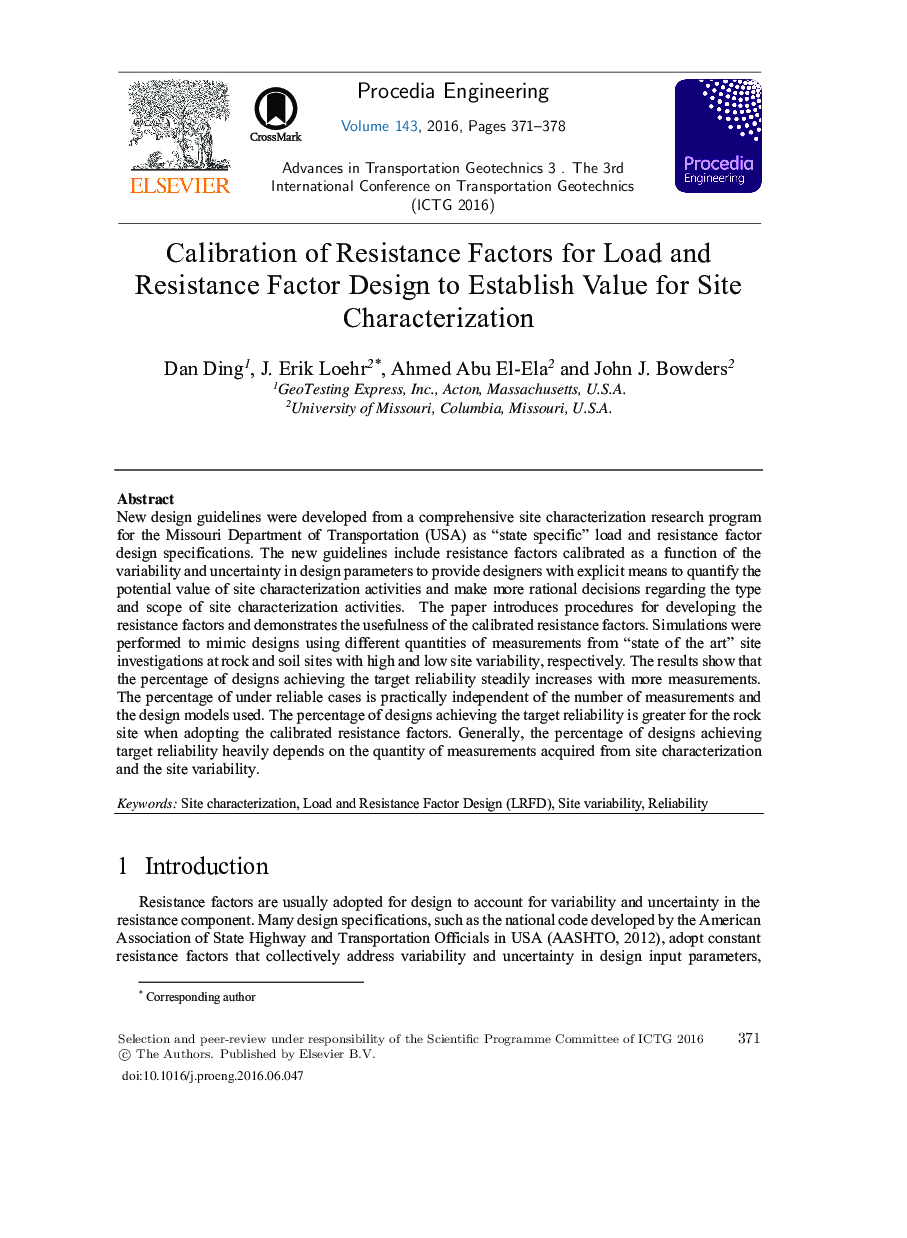| Article ID | Journal | Published Year | Pages | File Type |
|---|---|---|---|---|
| 854231 | Procedia Engineering | 2016 | 8 Pages |
New design guidelines were developed from a comprehensive site characterization research program for the Missouri Department of Transportation (USA) as “state specific” load and resistance factor design specifications. The new guidelines include resistance factors calibrated as a function of the variability and uncertainty in design parameters to provide designers with explicit means to quantify the potential value of site characterization activities and make more rational decisions regarding the type and scope of site characterization activities. The paper introduces procedures for developing the resistance factors and demonstrates the usefulness of the calibrated resistance factors. Simulations were performed to mimic designs using different quantities of measurements from “state of the art” site investigations at rock and soil sites with high and low site variability, respectively. The results show that the percentage of designs achieving the target reliability steadily increases with more measurements. The percentage of under reliable cases is practically independent of the number of measurements and the design models used. The percentage of designs achieving the target reliability is greater for the rock site when adopting the calibrated resistance factors. Generally, the percentage of designs achieving target reliability heavily depends on the quantity of measurements acquired from site characterization and the site variability.
